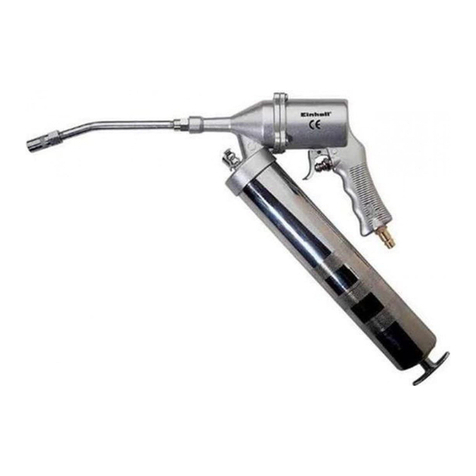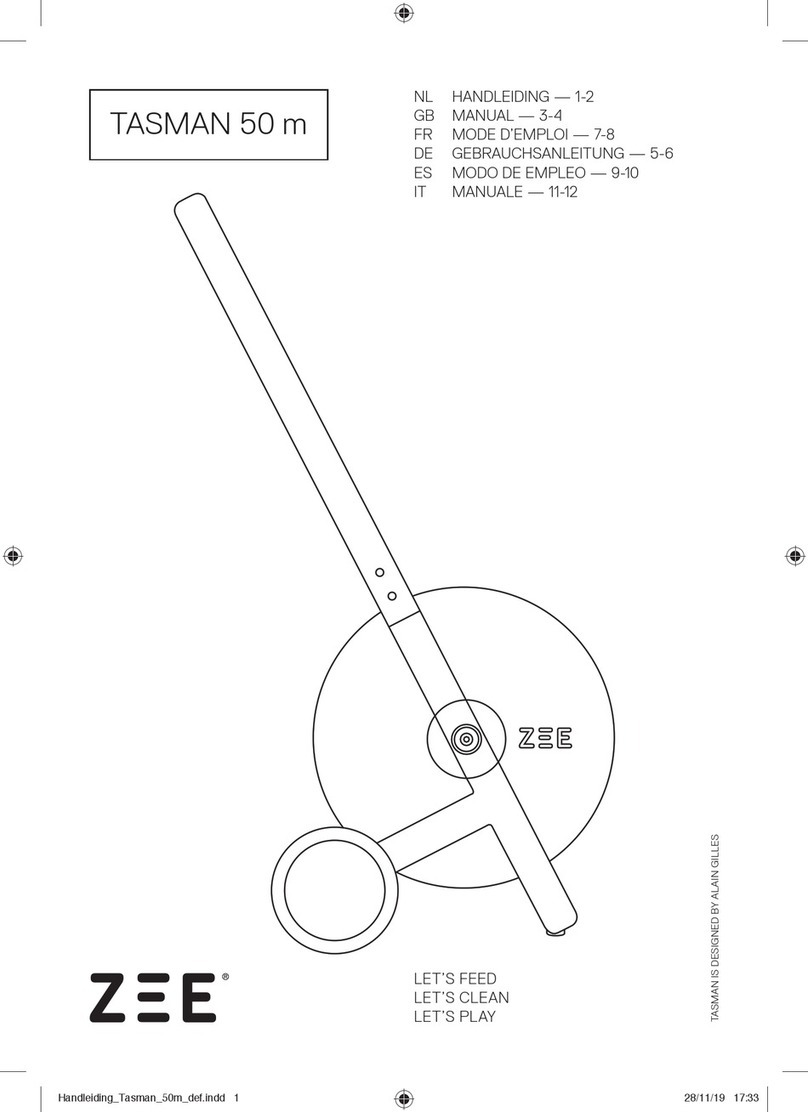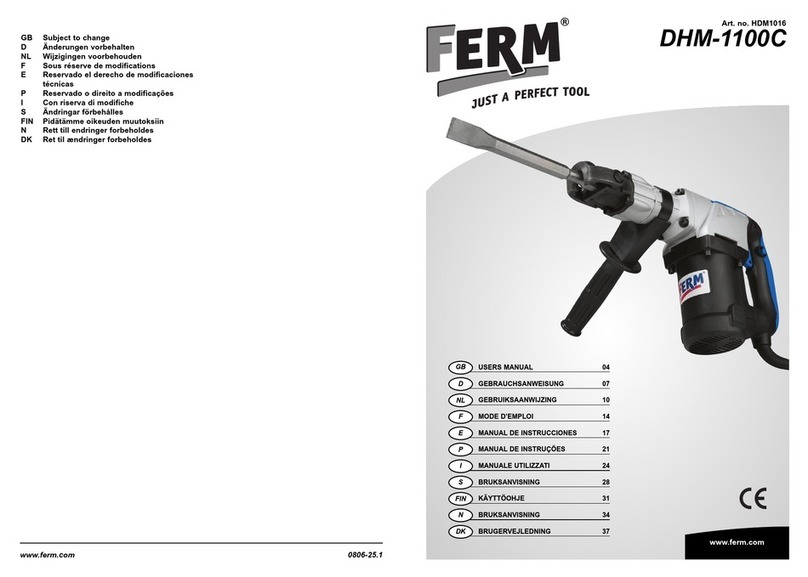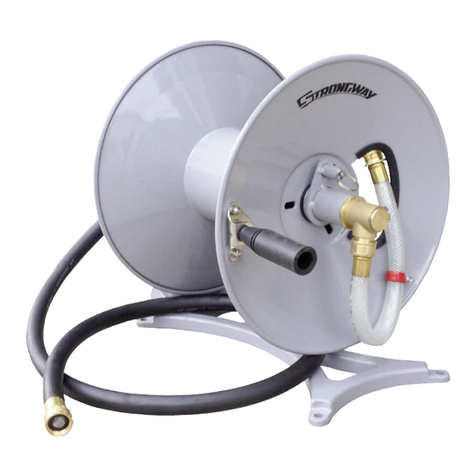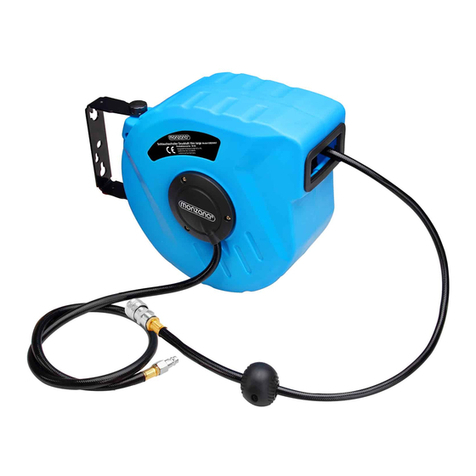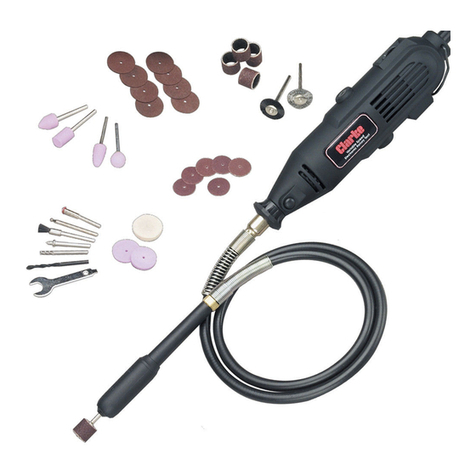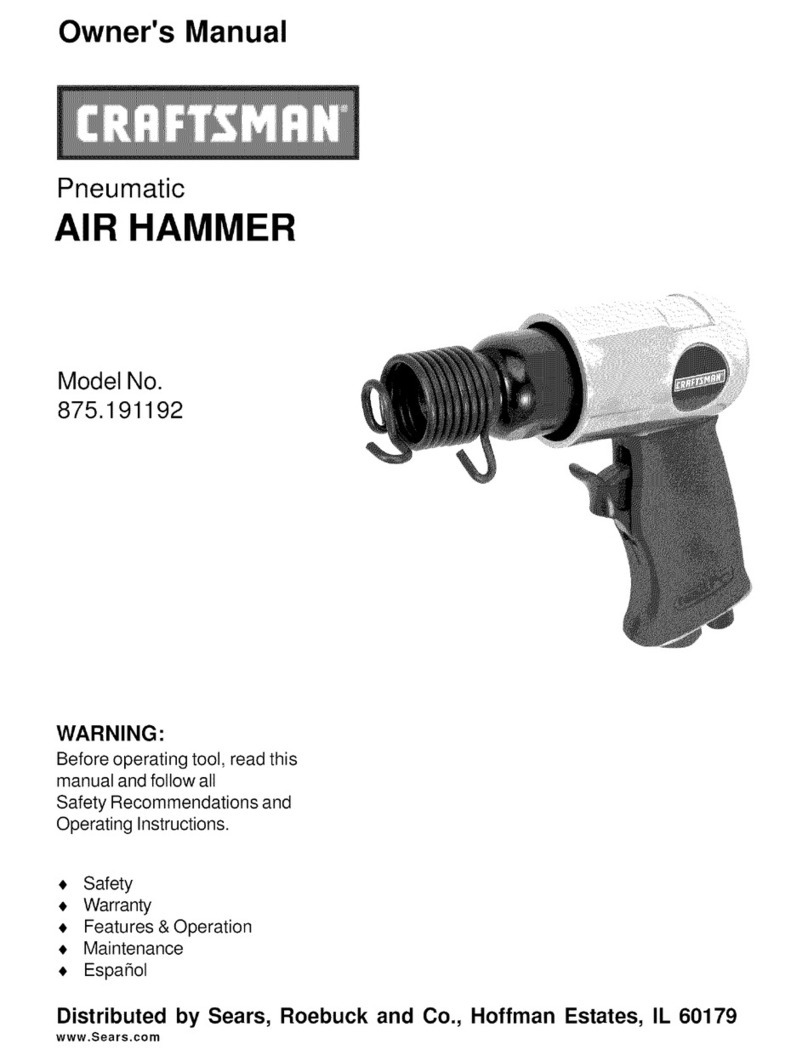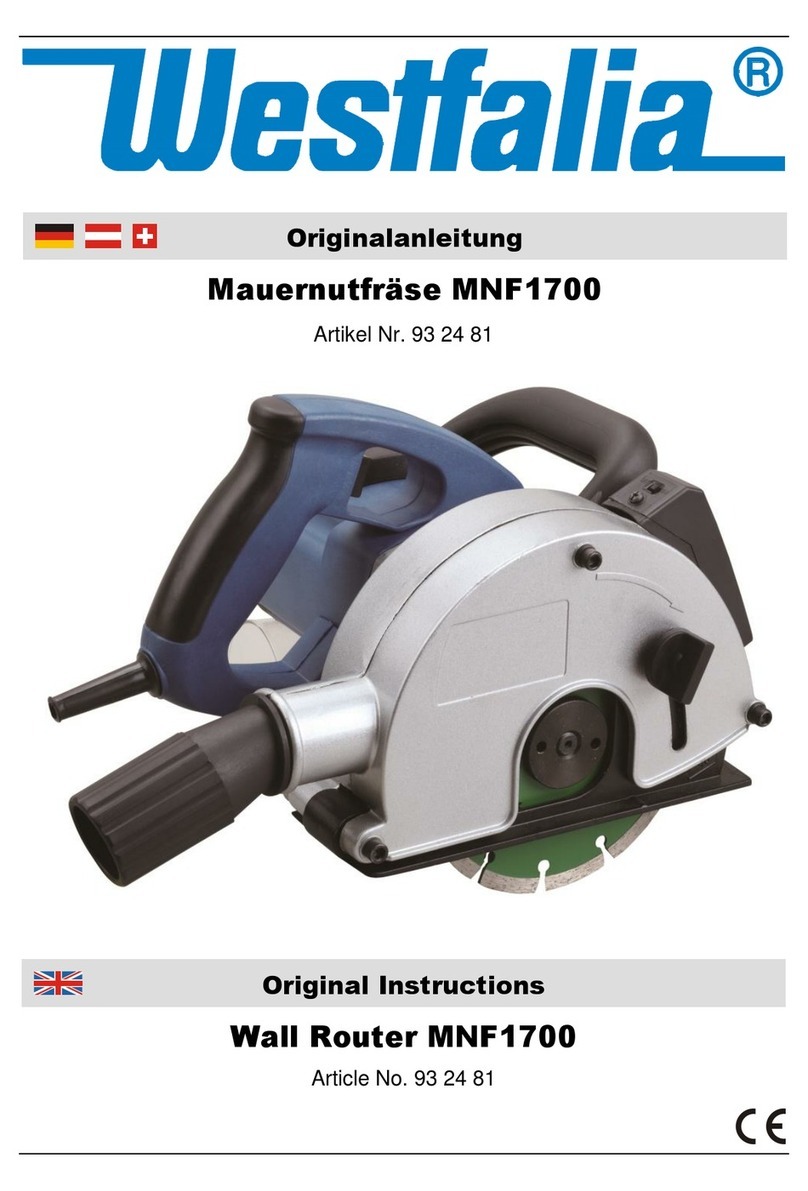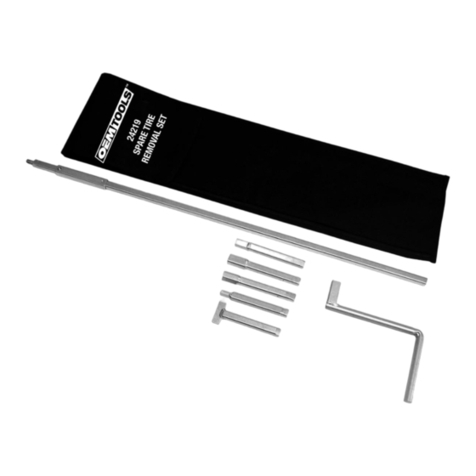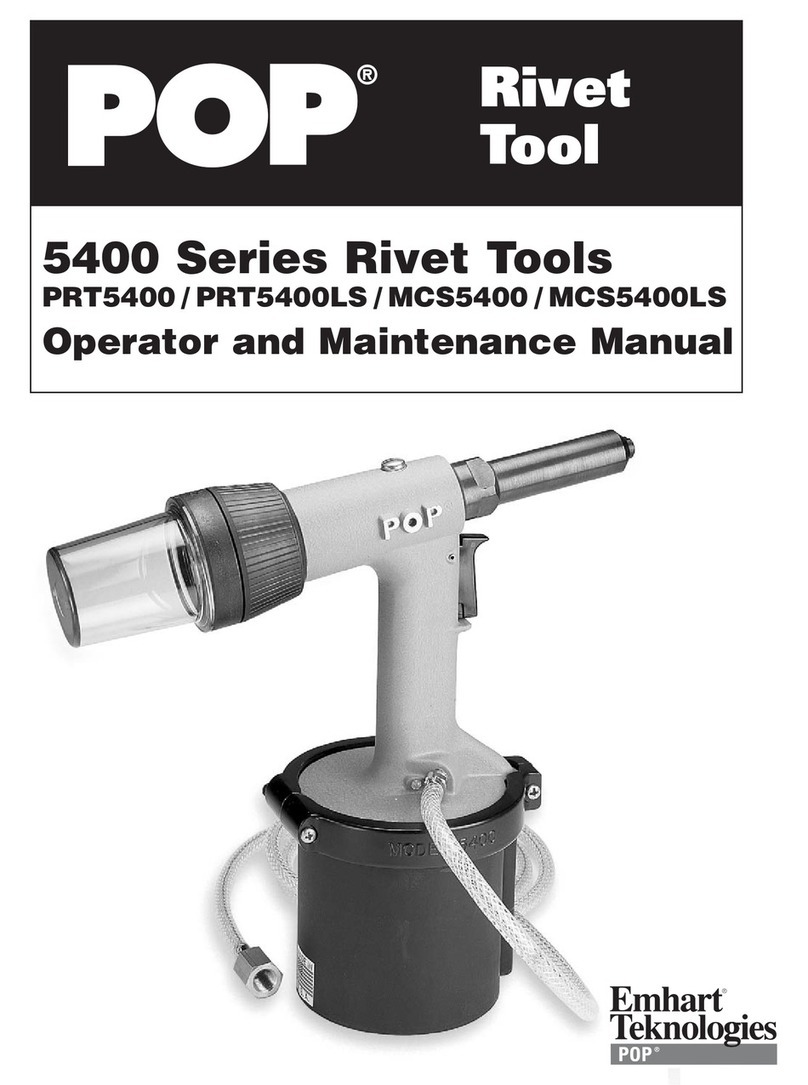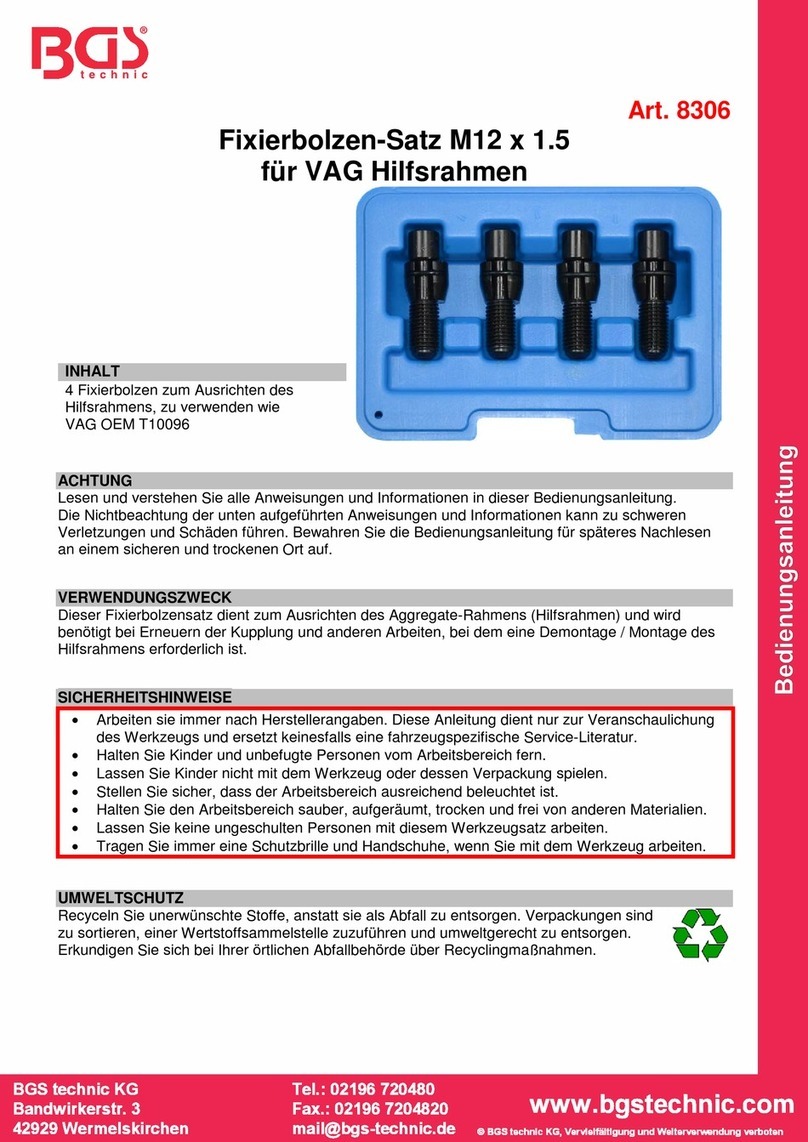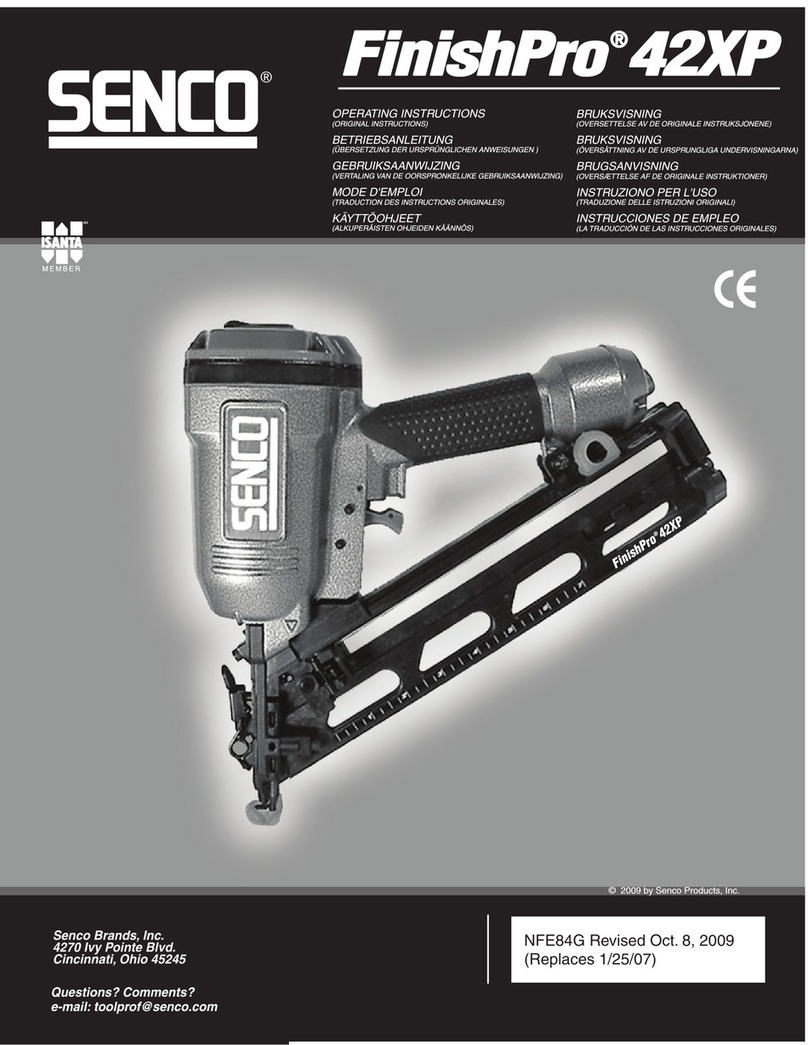BlueSpot 07951 User manual

150MM (6")
AIR HAMMER AND CHISEL SET
User Manual
07951

01
Thank you for purchasing a BlueSpot product, you can find further information
on our range at www.BlueSpot.uk.com. Please ensure that you are using the
product correctly and that all guidance and cautions are followed in accordance
with the instructions. Please retain these instructions for future reference.
General Information
Please make sure that you read these instructions carefully in order to avoid injury when using
the air hammer and chisel set. Follow all health and safety rules and regulations. If in doubt and
available please contact a more knowledgeable source.
DO NOT use if damaged.
• ALWAYS check the air hammer, air hose and chisels for damage before use. If damaged
do not use.
• ALWAYS check the chisels before use. Do not use blunt chisels as these can cause
damage to the workpiece or cause injury.
• ALWAYS check the work area before starting. Make sure there are no hidden electrical
wires, gas pipes etc.This could be very dangerous.
• Maintain tool in good and clean condition for best and safest performance.
• Keep the work area clean, uncluttered and ensure there is adequate lighting.
• Maintain correct balance and footing. Ensure the floor is not slippery and wear
non-slip shoes.
• Keep children and unauthorised persons away from the work area.
• For best and safest performance always ensure the tool is cleaned and maintained
regularly.The tool should always be cleaned before being stored away.
• ALWAYS dress appropriately – clothing should be close fitted and long hair tied back.
Jewellery should be removed and shoes should be worn with a non-slip sole.
• ALWAYS wear the correct eye or face protection when operating the air hammer.
• ALWAYS wear approved respiratory protection. This will help protect you from
any dust.
• ALWAYS wear ear protectors when using the air hammer.
• ALWAYS ensure you work in a well ventilated room.
• NEVER use oxygen, CO2, combustible gases or any bottled gas as a source of power.
• ALWAYS ensure the tool is used with a correctly rated compressed air supply.
• ALWAYS ensure the air hammer trigger is not pressed when connecting to the air hose.
• ALWAYS make sure that the air supply hose is kept away from heat, oil and sharp edges.
• DO NOT exceed the maximum pressure for the tool of 90 psi / 6.2 bar.
• DO NOT operate the air hammer if you are tired as this could be dangerous.
• DO NOT get the air hammer wet. Always use in dry locations/conditions.
Safe use
• NEVER try to get the air hammer to perform a task that it was not made for. Do not
overload or misuse the tool.
• ALWAYS disconnect the air hammer from the air supply when it is no longer in use or
is being passed to another person.
• ALWAYS check and adhere to national regulations when disposing of the air hammer.
• BE AWARE that the tool vibrates when in use. Vibration may be harmful to your hands
or arms. Stop using the tool immediately if the tool causes discomfort or pain occurs.
Seek medical advice.
• NEVER carry an air tool by the air supply hose or with your finger on the trigger.
• NEVER use accessories that are not designed for use with the air hammer.
• NEVER use any of the chisels supplied as a hand tool. They must only be used with the
air hammer.
• NEVER leave the air hammer unattended. When you have finished using the air
hammer it should be disconnected from the air supply and stored away in a safe place
that is out of reach of children.
• NEVER operate the tool if you are under the influence of drugs or alcohol as this can
be dangerous.

The BlueSpot Air Hammer and Chisel Set is ideal for general body shop work and rust removal.
The set comes complete with 4 chisels: Spot weld breaker, body panel cutter, taper punch and
ripping chisel.
Please make sure that you read these instructions carefully in order to avoid injury when using
the air hammer and chisel set. Follow all health and safety rules and regulations. If in doubt and
available please contact a more knowledgeable source.
DO NOT use if damaged.
• ALWAYS check the air hammer, air hose and chisels for damage before use. If damaged
do not use.
• ALWAYS check the chisels before use. Do not use blunt chisels as these can cause
damage to the workpiece or cause injury.
• ALWAYS check the work area before starting. Make sure there are no hidden electrical
wires, gas pipes etc.This could be very dangerous.
• Maintain tool in good and clean condition for best and safest performance.
• Keep the work area clean, uncluttered and ensure there is adequate lighting.
• Maintain correct balance and footing. Ensure the floor is not slippery and wear
non-slip shoes.
• Keep children and unauthorised persons away from the work area.
• For best and safest performance always ensure the tool is cleaned and maintained
regularly.The tool should always be cleaned before being stored away.
• ALWAYS dress appropriately – clothing should be close fitted and long hair tied back.
Jewellery should be removed and shoes should be worn with a non-slip sole.
• ALWAYS wear the correct eye or face protection when operating the air hammer.
• ALWAYS wear approved respiratory protection. This will help protect you from
any dust.
• ALWAYS wear ear protectors when using the air hammer.
• ALWAYS ensure you work in a well ventilated room.
• NEVER use oxygen, CO2, combustible gases or any bottled gas as a source of power.
• ALWAYS ensure the tool is used with a correctly rated compressed air supply.
• ALWAYS ensure the air hammer trigger is not pressed when connecting to the air hose.
• ALWAYS make sure that the air supply hose is kept away from heat, oil and sharp edges.
• DO NOT exceed the maximum pressure for the tool of 90 psi / 6.2 bar.
• DO NOT operate the air hammer if you are tired as this could be dangerous.
• DO NOT get the air hammer wet. Always use in dry locations/conditions.
02
Introduction
Specification
Maximum Operating Pressure
Working Air Pressure
Air Consumption
Maximum Blows Per Minute
Air Inlet Size
Vibration Levels
Sound Pressure Level
Sound Power Level
Dimensions
Weight
100 PSI
90 PSI
4.5 CFM
4500 blows per minute
¼” BSP
12.04 m/s2 (Uncertainty K is 1.06 m/s2)
99.3 dB
110.3 dB
14.5 x 16 x 5cm
1.4 kg
Safe use (continued)
• NEVER try to get the air hammer to perform a task that it was not made for. Do not
overload or misuse the tool.
• ALWAYS disconnect the air hammer from the air supply when it is no longer in use or
is being passed to another person.
• ALWAYS check and adhere to national regulations when disposing of the air hammer.
• BE AWARE that the tool vibrates when in use. Vibration may be harmful to your hands
or arms. Stop using the tool immediately if the tool causes discomfort or pain occurs.
Seek medical advice.
• NEVER carry an air tool by the air supply hose or with your finger on the trigger.
• NEVER use accessories that are not designed for use with the air hammer.
• NEVER use any of the chisels supplied as a hand tool. They must only be used with the
air hammer.
• NEVER leave the air hammer unattended. When you have finished using the air
hammer it should be disconnected from the air supply and stored away in a safe place
that is out of reach of children.
• NEVER operate the tool if you are under the influence of drugs or alcohol as this can
be dangerous.

1. Retaining Spring
2. Cylinder
3. Retaining Ring
4. Trigger
5. ¼” BSP Air Inlet /
Hose Adaptor
6. Regulator
7. Taper Punch
8. Tailpipe Cutter Chisel
9. Spot Weld Breaker Chisel
10. Ripping Chisel
11. Airline Coupling Screw Adaptor
1
2
3
4
5
6
8
9
7
10
03
Specification (continued)
Oiling the air tool
We recommend using air line oil to oil the air tool. This will help to maintain the tools best
performance. Please refer to the maintenance instructions below on how to oil the air tool.
Connecting to the air supply
ALWAYS ensure the air supply is turned off before beginning.
1. Insert a few drops of air line oil into the air hammer through the air inlet before beginning.
2. Using the air inlet connect a suitable air hose. Make sure it is securely fitted.
3. Connect the other end of the hose to the air supply. Make sure it is securely fitted.
4. Turn on the air supply.
5. Before proceeding any further check for any air leaks. If the connection of the hose is not
secure you may find a leak. PTFE tape can be used to seal the connection. If leaks are found
they need to be fixed before proceeding.
Operation

04
Oiling the air tool
We recommend using air line oil to oil the air tool. This will help to maintain the tools best
performance. Please refer to the maintenance instructions below on how to oil the air tool.
Connecting to the air supply
ALWAYS ensure the air supply is turned off before beginning.
1. Insert a few drops of air line oil into the air hammer through the air inlet before beginning.
2. Using the air inlet connect a suitable air hose. Make sure it is securely fitted.
3. Connect the other end of the hose to the air supply. Make sure it is securely fitted.
4. Turn on the air supply.
5. Before proceeding any further check for any air leaks. If the connection of the hose is not
secure you may find a leak. PTFE tape can be used to seal the connection. If leaks are found
they need to be fixed before proceeding.
Operation (continued)
6. When you have checked for any air leaks and have fixed them your tool is now ready for use.
Fitting the chisel
ALWAYS ensure the air supply is turned off whilst fitting the chisel.
NEVER press the trigger whilst fitting the chisel.
1. Unscrew the retaining spring and put to one side.
2. Find the chisel that is best suited to the job you would like to perform.
3. Insert the chisel into the air hammer.
4. Attach the retaining spring back to the air hammer. Use the lugs to tighten.
Trigger
• Pull the trigger to operate the air hammer.
• Release the trigger to stop the air hammer.
Operating the air hammer
When the air supply and chisel have been correctly fitted to the air hammer please follow the
follow instructions on how to operate.
ALWAYS ensure you have followed all of the safe use instructions before operating the air
hammer and are wearing the correct clothing, footwear and PPE equipment before beginning.
1. Turn the air supply on.
2. At a 60 degree angle hold the tool firmly in front of the work surface.
3. Pull the trigger to operate the air hammer.
4. Slowly move the air hammer across the work surface.
5. Release the trigger to stop the air hammer.
Disconnecting the air supply
ALWAYS ensure the trigger has been released and that the tool is no longer in use.
ALWAYS turn the air supply off and ensure the compressed air pressure has been released before
disconnecting the air hose from the air hammer.

05
Troubleshooting
Air hammer is running
slowly / Air hammer is
not operating
Air hammer will not shut off
Air hammer runs erratically
Leaks in the air hose
Air pressure low
Dirt/gum in the air hammer
No oil in the air hammer
Water in the airline
Damage to the O-rings / O-ring
not fitted correctly
Loose cylinder
Problem Possible Cause Solution
Check the air hose connection
to the air hammer. Use PTFE
tape to secure.
Check the regulator and adjust
the compressor to 90 PSI /
6.2 bar. Check the size and
length of the hose – this may
need changing.
Use air line oil or gum solvent
to flush through the air
hammer.
Follow the daily maintenance
instructions to lubricate the air
hammer with oil.
Drain the air hammer. Run the
tool until clear of water. Follow
the daily maintenance
instructions to oil the tool.
Replace the O-ring. If unsure
get the tool repaired by a
professional.
Tighten the cylinder or if
unsure get repaired by a
professional.
• To correctly shut down the air supply and release the compressed air please refer to the
compressor instruction manual.
• Once the air supply has been turned off and the compressed air released disconnect the air
hose from the air hammer.
• Clean and store the air hammer safely. Refer to the cleaning and maintenance instructions
on how to do this correctly.
Operation (continued)

06
Cleaning & Maintenance
Always check and adhere to national regulations when disposing of any tools that are no longer
functional and cannot be repaired.
• Contact your local waste disposal authority for information on how to correctly dispose
of tools.
• Do not dispose of any power tools within domestic waste.
• Do not incinerate.
Disposal
Daily Maintenance
ALWAYS ensure any water has been drained from the compressed air supply before performing
any cleaning or maintenance.
We recommend oiling the tool before each use.To do this please do the following –
• Turn the air hammer upside down and pour 1-2 drops of the air-line oil into the air inlet.
• If the air hammer is in constant use this process should be repeated after every two to three hours.
Cleaning
To maintain best tool performance we recommend cleaning and performing the following mainte-
nance on the air hammer –
• ALWAYS ensure the tool is cleaned after each use and before it is stored away.
• Clean the air inlet and flush out the tool with gum solvent to clean any deposits from the air
hammer.
Storage
Before storing the tool we recommend running a few drops of air-line oil into the air inlet, then
running the tool. This will oil the internal parts of the air hammer and help maintain best
performance.
• ALWAYS ensure the tool has been disconnected from the air supply.
• ALWAYS check over the tool for damaged or worn parts before storing. If any damage is
found you will need to replace.
• ALWAYS ensure the tool is stored in a safe, dry place that is out of reach from children.

07
Contact
Find out more about BlueSpot® at www.BlueSpot.uk.com
Tel: 0800 093 0115
Email: [email protected]
Orme Business Centre,
Greenacres Road,
Oldham,
OL4 3NT
Recycle unwanted materials instead of disposing of them as waste. All tools, accessories and
packaging should be sorted, taken to a recycling centre and disposed of in a manner which
is compatible with the environment. When the product becomes completely unserviceable
and requires disposal, drain any fluids (if applicable) into approved containers
and dispose of the product and fluids according to local regulations.
Environmental Protection
Notes
ContactDistance to Spot Size
Dispose of this product at the end of its working life in compliance with the EU Directive on
Waste Electrical and Electronic Equipment (WEEE). When the product is no longer required,
it must be disposed of in an environmentally protective way. Contact your local solid waste
authority for recycling information.
WEEE Regulations
Table of contents
Other BlueSpot Tools manuals
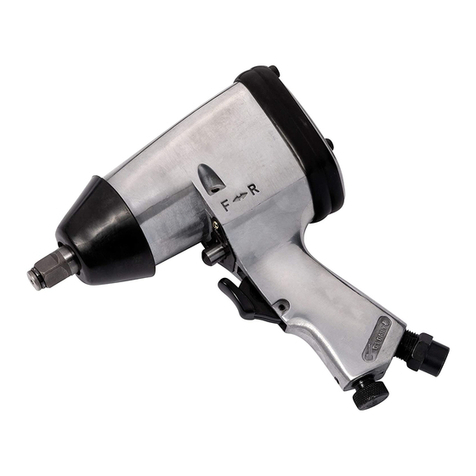
BlueSpot
BlueSpot 07945 User manual

BlueSpot
BlueSpot M3-M10 User manual

BlueSpot
BlueSpot 35111 User manual
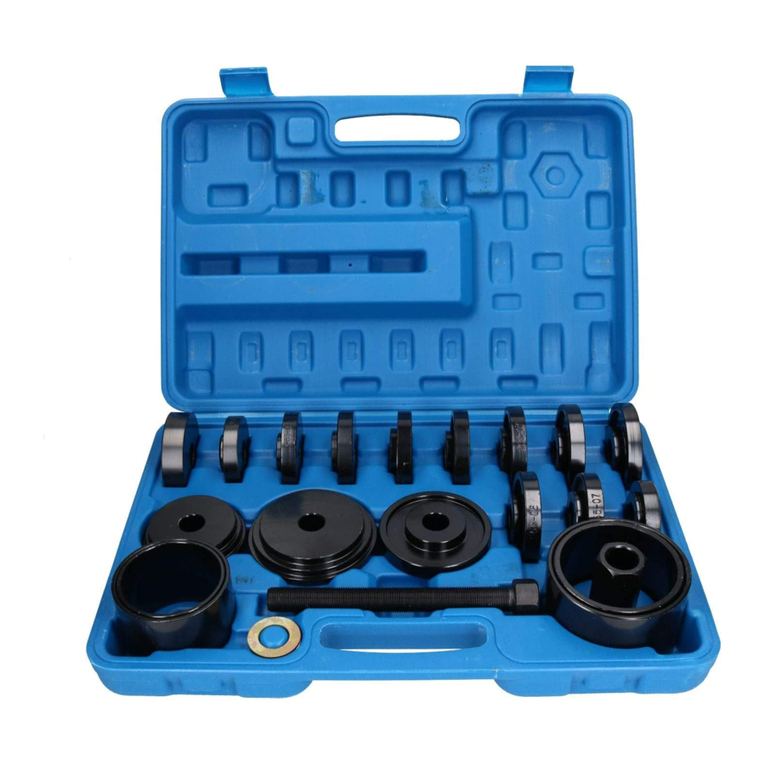
BlueSpot
BlueSpot 07902 User manual
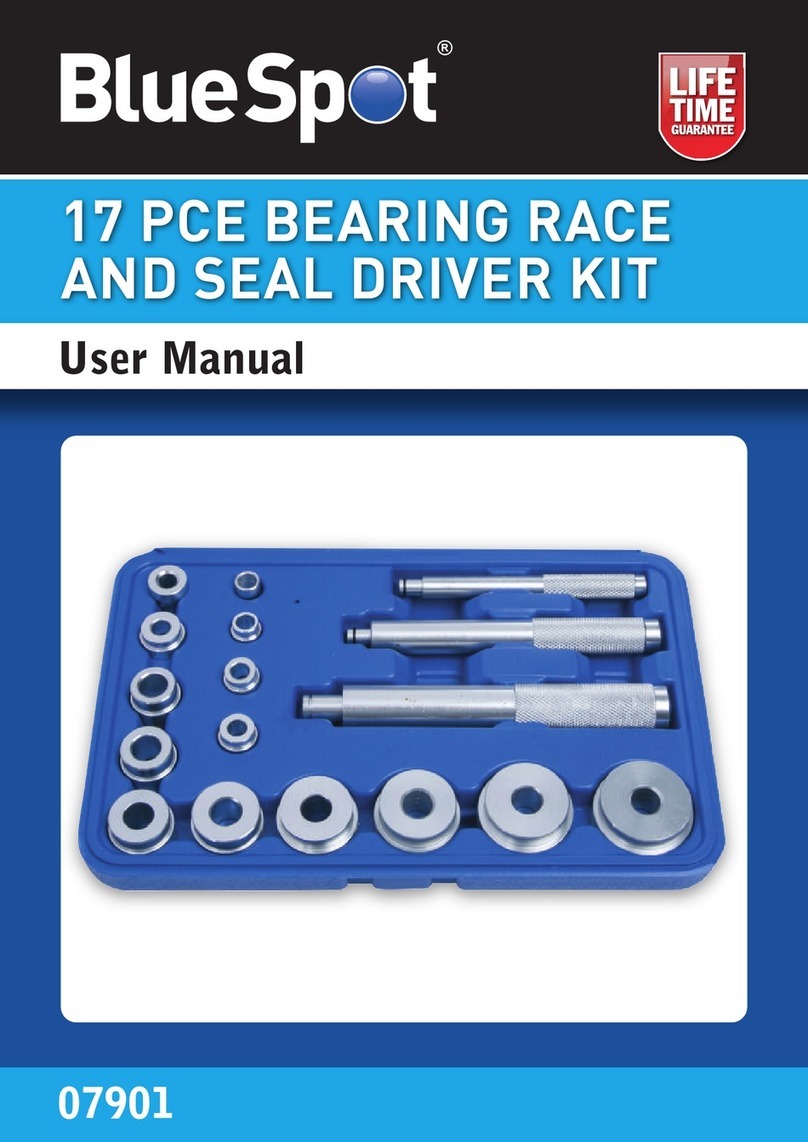
BlueSpot
BlueSpot 07901 User manual
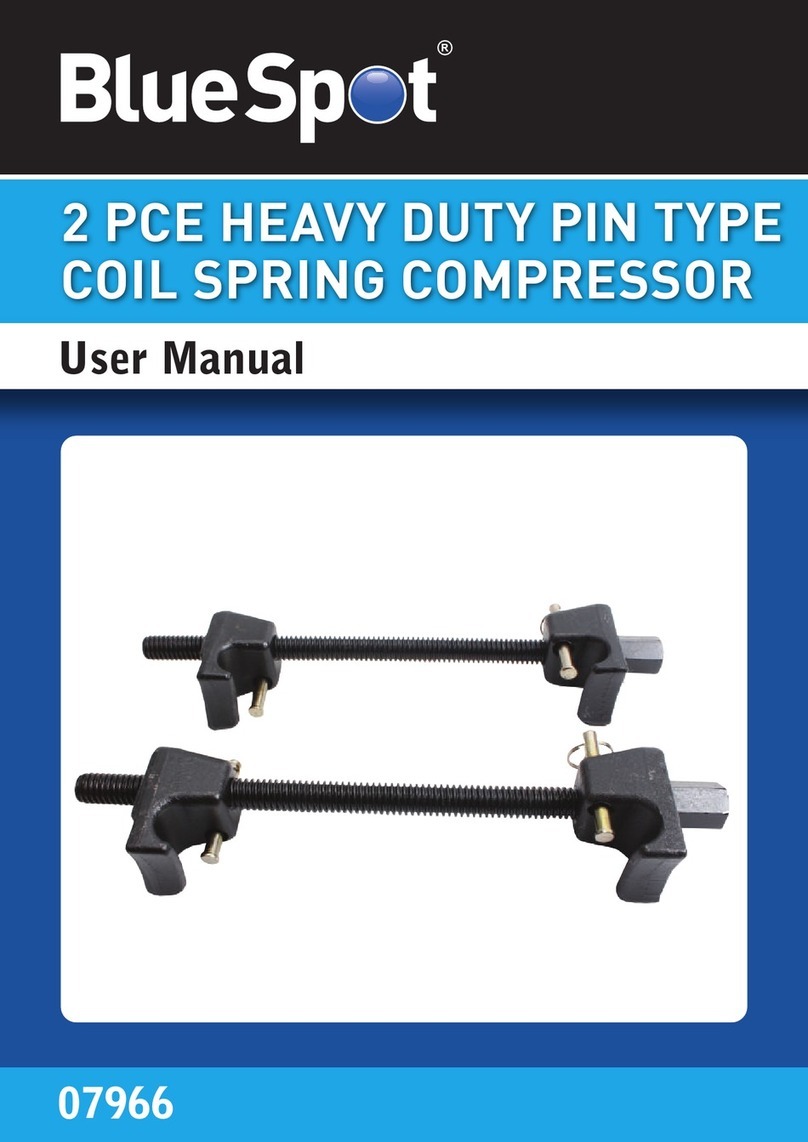
BlueSpot
BlueSpot 07966 User manual
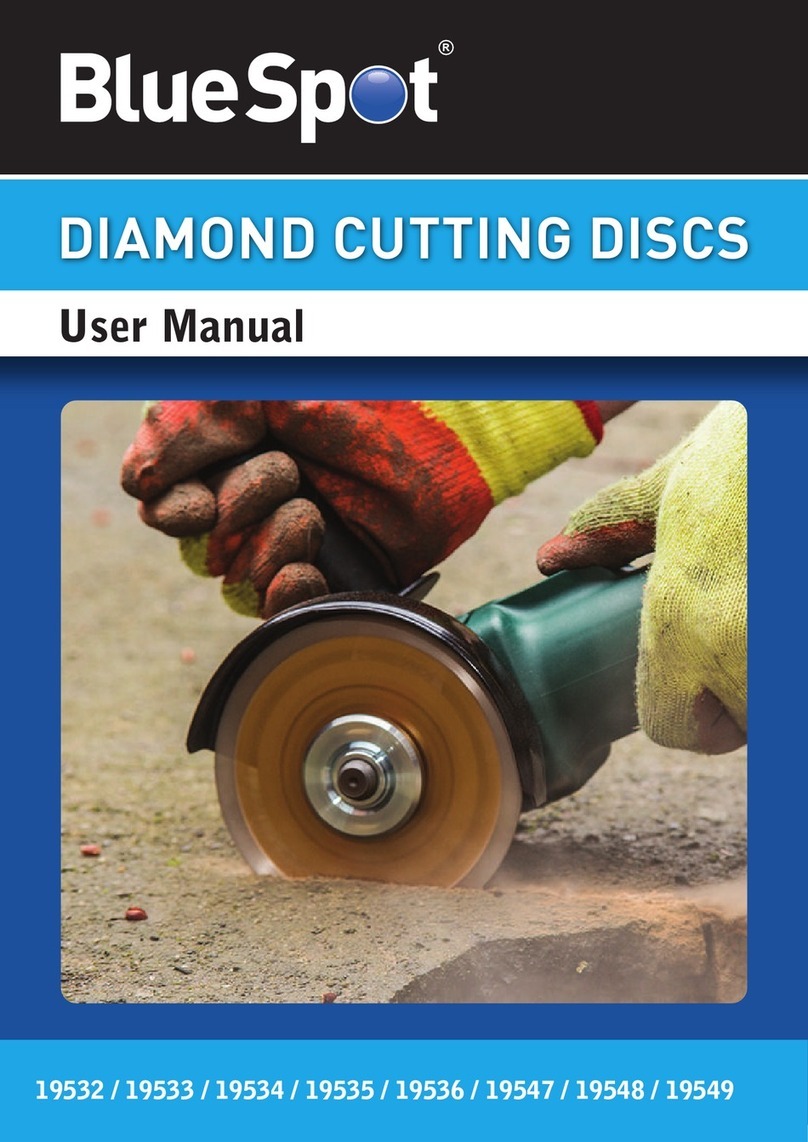
BlueSpot
BlueSpot 19532 User manual
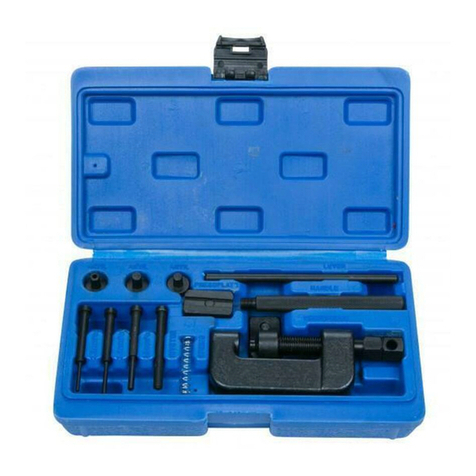
BlueSpot
BlueSpot 07903 User manual

BlueSpot
BlueSpot 07967 User manual
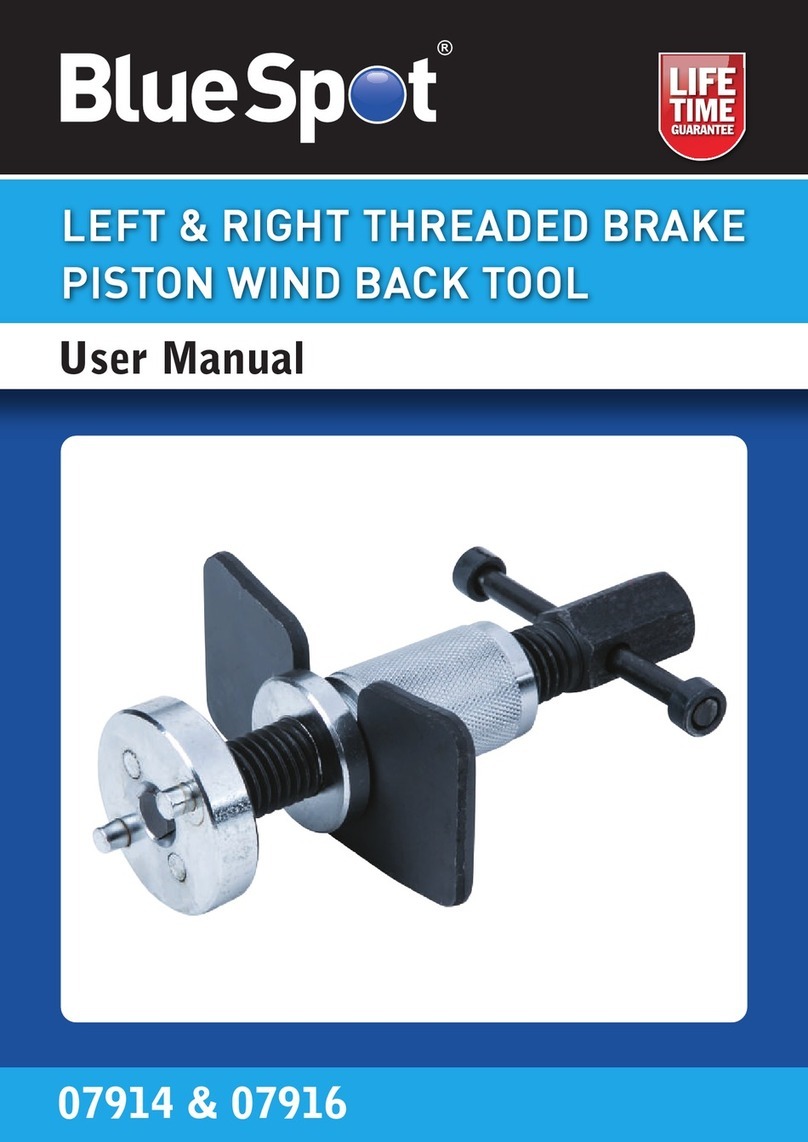
BlueSpot
BlueSpot 07914 User manual

